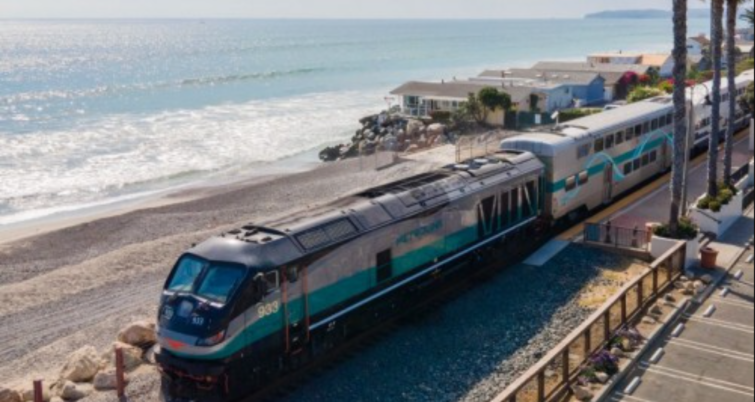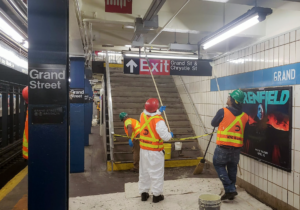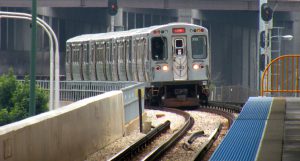OCTA’s Emergency Stabilization Effort Paves Way for Metrolink, Amtrak Pacific Surfliner Rail Service
Written by Kyra Senese, Managing Editor
All regular Metrolink and Amtrak Pacific Surfliner service is set to resume beginning April 17, after the Orange County Transportation Authority’s emergency construction work has been completed to stop slope movement and stabilize the tracks in south San Clemente.
“This emergency work has posed an unprecedented challenge, especially with the heavy rainfall this season, and we’re very pleased to announce that passenger service can safely resume on this key stretch of Southern California rail,” said OCTA Chairman Gene Hernandez, also the mayor of Yorba Linda. “We greatly appreciate the public’s patience and their understanding that ensuring passenger safety is always the first priority.”
Metrolink intends to reintroduce all regular passenger rail service along its Orange County and Inland Empire-Orange County lines through San Clemente, serving Oceanside seven days a week once more.
“I am very excited about Metrolink resuming service to and from Oceanside,” said Metrolink Board Chair Larry McCallon, who also serves as the mayor of the City of Highland in San Bernardino County. “I know the residents of the Inland Empire are looking forward to again taking the train to the beach. I encourage everyone to return to using our rail service to and from the beach areas as the nice weather returns to Southern California. I want to thank our partners at OCTA for their diligence and coordination as we both worked toward ensuring the continued safety of our rail service.”
The LOSSAN Rail Corridor Agency, which manages Amtrak Pacific Surfliner service, has operated weekend service through the work area since the first row of stabilizing ground anchors were installed in February.
Full daily service is scheduled to resume on April 17 from San Diego to Orange County and destinations further north, a release said. A bus connection between Oceanside and Irvine will no longer be necessary.
“The reopening of the tracks in San Clemente restores vital intercity rail connections between San Diego, Los Angeles, Santa Barbara, and San Luis Obispo,” said Jason Jewell, Managing Director of the LOSSAN Agency. “We thank our customers for their patience during this extended construction period and look forward to welcoming them back next week.”
At the April 10 OCTA Board of Directors meeting, OCTA officials reported that the construction has been effective in stopping track movement. This week, crews will complete and lock off the second row of grade beam panels and ground anchor tiebacks that are stabilizing the privately owned hillside next to the track.
Geotechnical experts have concluded that the more than 200 ground anchors drilled into the bedrock along the 700 feet of track have halted its movement.
Since the first row of tiebacks and ground anchors was completed in early February, inclinometers monitoring for any hillside or track movement have revealed no movement. The second row was put in place for added stability, a release said.
Heavy rains have caused delays in the construction schedule since the project began in October. The work is being done on a privately owned slope south of the San Clemente Pier, along 700 feet of rail between the ocean and homes above in the Cyprus Shore Homeowners Association.
The work has involved drilling large steel 130-foot-long ground anchors into the bedrock of the slope adjacent to the railroad track to prevent it from pushing the track further toward the ocean. The track had moved as much as 28 inches between September of 2021 and September of 2022 because of storm surge and sand erosion on the coastal side and the gradually sliding hillside on the other.
In late September, passenger rail service, including Amtrak and Metrolink, was suspended out of caution and to allow for emergency repairs.
OCTA and its contractors will continue to cover the retaining wall and replant native vegetation in the project area. OCTA is collaborating with state and federal agencies to mitigate the effects of the emergency project, a release said.
OCTA has also established a framework for researching long-term solutions to threats to the coastal rail line, the agency said. The first step is to collaborate with all stakeholders and appropriate agencies to better understand what is causing the threat and to continue to protect the existing tracks. Simultaneously, longer-term solutions for uninterrupted rail service will be investigated, which may include moving the rail line.
OCTA is collaborating with state and federal officials to secure the funding needed for the longer-term studies as well as the current construction. The current cost of emergency work is estimated to be $13.7 million. When the OCTA board of directors approved the construction in October, the California Transportation Commission met in a special session and approved $6 million in emergency funding to help cover the costs.
Additional recent RT&S reporting on the San Clemente stabilization efforts can be viewed here. Recent video footage of the construction project in San Clemente can be viewed via the YouTube link below.





